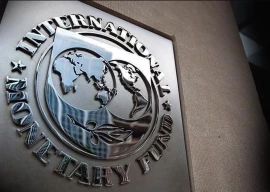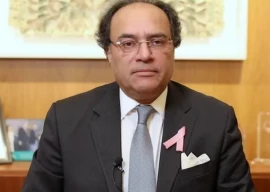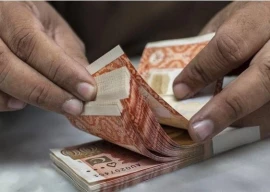
The dominance of accounting mentality paves the way for ad hocism. Apart from a few exceptions, the government has not pursued the same sub-sectors to turn the economy around.
Opposition protests proposed hike in water taxes
When the government observes that a certain sector has emerged as a booming sector, it slaps taxes and duties on it. The case of construction sub-sector is instructive in this regard.
The construction sub-sector has many forward and backward linkages and it started to perform well in financial year 2014-15 with news of the China-Pakistan Economic Corridor (CPEC).
In the last budget, the government increased federal excise duty (FED) on cement and slightly increased regulatory duty on coal. In the current year budget, it has further increased FED on cement and increased the regulatory duty on coal. The fixed tax regime of builders and developers has been reverted. Similarly, the emerging steel industry has not saved the skin from indirect taxes. Owing to these steps, the cost of construction has started to increase, which will affect the construction sector in the medium term.
An accommodative monetary policy is assumed on the basis of managed exchange rate regime with moderate inflation of 6% along with stable international crude oil prices. By taking these assumptions, the policy-makers expect a stable interest rate environment as the allocated amount for domestic debt servicing is almost the same.
Budget surplus
In the current budget, fiscal discipline will be imposed on the provinces through a top-down mechanism as the government thinks that the share of provinces has become excessive due to the divisible pool. Therefore, the net expected provincial surplus is estimated at Rs347 billion for FY18.
Punjab would be the forerunner to produce the huge fiscal surplus of around Rs300 billion to reach this quantifiable target. If the revenue target is not achieved, Punjab would be affected the most since it depends heavily on the federal divisible pool.
The current expenditure is understated. In the election year, the government has raised the salary of civil servants more than the inflation in order to appease them. Interestingly, the opposition is chanting that this raise is minuscule. This very act would increase the fiscal deficit. Federal estimates for revenue collection are not realistic, especially in the election year, as the government expects around 14% growth. The FBR’s revenue target of Rs4 trillion is quite ambitious without meaningful structural reforms.
Heavy reliance on GST along with withholding tax regimes and tax evasion reflects the grave problems of policy and administration. Similarly, the unfulfilment of revenue target would result in a downward revision of the federal development expenditure.
Energy projects
The budget document suggests that there is continuity in the allocation for power projects and efforts are being made to speed up the pace of CPEC projects.
The government has focused heavily on adding capacity to generate electricity and paid relatively less attention to transmission and distribution. However, the main problem of continuous and uninterrupted power supply has not been solved yet.
Rs120b worth of new tax measures
In a nutshell, this year’s budget is the fifth in a row for a democratic dispensation where there is a cosmetic attempt to reduce the fiscal deficit. Budget making has been replete with creative accounting since the effort is to show a reduction in the fiscal deficit. In the preceding four years, the government was able to show a reduction in the deficit. The creative accounting has been done by parking circular debt out of the budget books and by showing exaggerated statistical discrepancies.
The writer is Assistant Professor of Economics at SDSB, LUMS
Published in The Express Tribune, June 5th, 2017.
Like Business on Facebook, follow @TribuneBiz on Twitter to stay informed and join in the conversation.
1717421843-0/Doja-Cat-(1)1717421843-0-405x300.webp)











1727268465-0/Untitled-design-(42)1727268465-0-270x192.webp)




COMMENTS (3)
Comments are moderated and generally will be posted if they are on-topic and not abusive.
For more information, please see our Comments FAQ